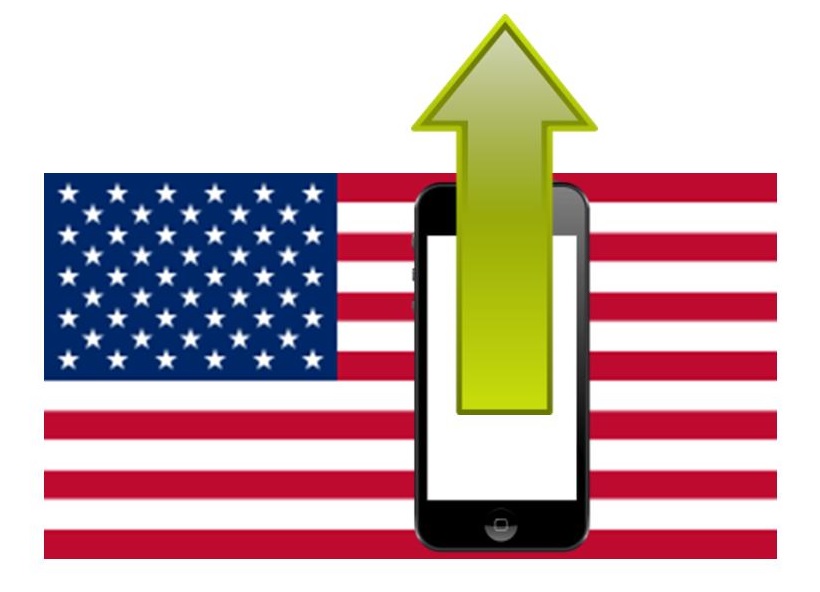Research released by Internet Retailer has shown that smartphone based shopping is rapidly gaining popularity.
It is no mystery that making sure that a store has an online presence – especially one in which products can be researched (or, even better, purchased) – is an important element in improving a retailer’s successes, but recent research is also showing that mobile commerce needs to play a bigger role in this effort, as consumers are looking to their smartphones and tablets on an increasing basis when it comes to finding the products and services that they want to buy.
A recent study involving the data from 366 American retailers has shown that m-commerce sales will be up 74 percent.
The study was conducted by Internet Retailer, which looked at U.S. retailers and their mobile commerce strategies. This was published in the 2015 Mobile 500. What it determined was that this year’s sales over smartphones and tablets would reach $59 billion, which is an increase of 74 percent over the $34 billion in sales that was achieved last year. Moreover, it also predicts that sales over smartphones and tablets will make up 23 percent of the online sales total for this year in the United States.
This shows that the pace of mobile commerce is growing faster than that of online shopping, overall.
 In the second quarter of this year, the online retail sales – including purchases made over desktop computers, laptops, and mobile devices – rose by 15.7 percent, said the Commerce Department. While this is certainly a solid rate of growth, it is also very clear that it is much lower than the increases being seen in m-commerce sales.
In the second quarter of this year, the online retail sales – including purchases made over desktop computers, laptops, and mobile devices – rose by 15.7 percent, said the Commerce Department. While this is certainly a solid rate of growth, it is also very clear that it is much lower than the increases being seen in m-commerce sales.
The two companies that achieved the highest mobile sales so far in 2014, with a combined $30.8 billion, are Amazon.com (in first place) and Apple (in second place). Those two companies, alone, hold a 47 percent share of the Mobile 500 smartphone and tablet based sales total.
That said, the report also acknowledged that mobile commerce as a market is nowhere near mature and there is still a great deal of room for growth among existing players as well as among new entrants.
Report highlights the growing prominence of mobile shopping and its effect on digital commerce
A new report released by comScore shows that mobile shopping is on the rise. Shopping from a mobile devices is becoming more popular among consumers, and the sales coming from mobile shopping are boosting e-commerce spending numbers. Mobile commerce is still a small percentage of overall digital sales, representing some 11% of e-commerce. Despite this, however, mobile shopping is beginning to have a major impact on the e-commerce space, transforming the way merchants conduct business online.
Digital spending is on the rise among mobile consumers that enjoy shopping for and purchasing products online
The report from comScore shows that digital commerce has seen a major increase in spending thanks to mobile commerce. Consumers are embracing the idea of shopping for and purchasing products online with their smartphones and tablets. As retailers begin adopting better mobile commerce services and platforms, mobile shopping is expected to continue growing and influencing the overarching digital commerce space.
Mobile commerce saw a 47% increase in spending during the second quarter of this year
 The report shows that mobile commerce grew by 47% during the second quarter of this year, significantly overshadowing the growth this sector had seen in previous quarters. By comparison, conventional e-commerce spending grew by 10%, while discretionary retail spending grew by just 3%. The report predicts that such growth is not likely to be sustainable throughout the remainder of the year, but mobile commerce is likely to continue gaining attention among consumers whose lives are tethered to mobile devices.
The report shows that mobile commerce grew by 47% during the second quarter of this year, significantly overshadowing the growth this sector had seen in previous quarters. By comparison, conventional e-commerce spending grew by 10%, while discretionary retail spending grew by just 3%. The report predicts that such growth is not likely to be sustainable throughout the remainder of the year, but mobile commerce is likely to continue gaining attention among consumers whose lives are tethered to mobile devices.
Mobile commerce adoption is on the rise despite certain challenges that consumers have faces in recent years
Mobile commerce has faced many challenges over the years, especially when it comes to the security of a consumer’s financial information. These challenges have slowed adoption somewhat, but consumers have not been dissuaded from shopping online with a mobile device and making mobile payments. The mobile space is likely to continue having a significant impact on e-commerce as a whole, especially as new mobile payments platforms are made available and people use these platforms more regularly.
 In the second quarter of this year, the online retail sales – including purchases made over desktop computers, laptops, and mobile devices – rose by 15.7 percent, said the Commerce Department. While this is certainly a solid rate of growth, it is also very clear that it is much lower than the increases being seen in m-commerce sales.
In the second quarter of this year, the online retail sales – including purchases made over desktop computers, laptops, and mobile devices – rose by 15.7 percent, said the Commerce Department. While this is certainly a solid rate of growth, it is also very clear that it is much lower than the increases being seen in m-commerce sales.
 The report shows that mobile commerce grew by 47% during the second quarter of this year, significantly overshadowing the growth this sector had seen in previous quarters. By comparison, conventional e-commerce spending grew by 10%, while discretionary retail spending grew by just 3%. The report predicts that such growth is not likely to be sustainable throughout the remainder of the year, but mobile commerce is likely to continue gaining attention among consumers whose lives are tethered to mobile devices.
The report shows that mobile commerce grew by 47% during the second quarter of this year, significantly overshadowing the growth this sector had seen in previous quarters. By comparison, conventional e-commerce spending grew by 10%, while discretionary retail spending grew by just 3%. The report predicts that such growth is not likely to be sustainable throughout the remainder of the year, but mobile commerce is likely to continue gaining attention among consumers whose lives are tethered to mobile devices.